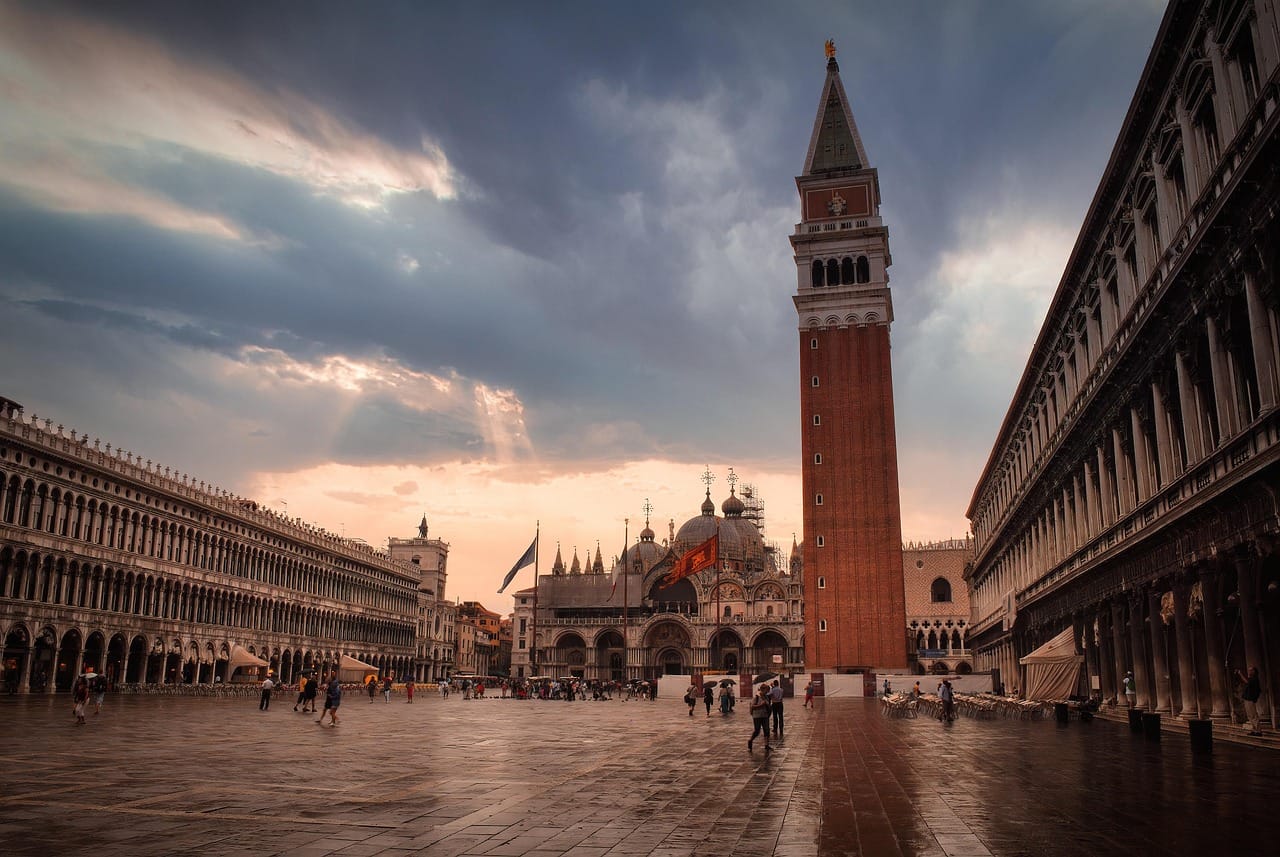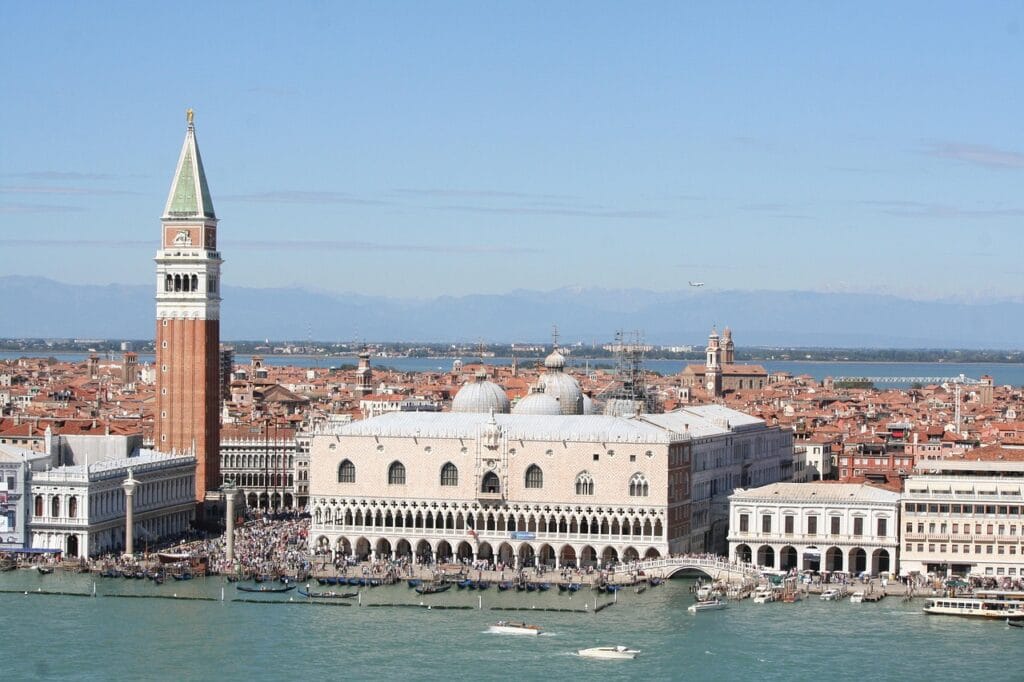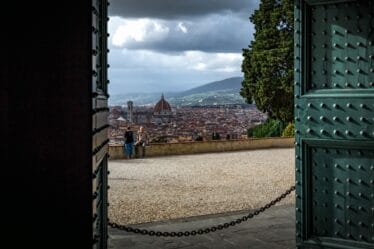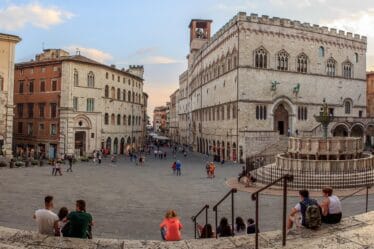

Venice Free Tour-The Fall and Rise
When Venice Held Its Breath: The Fall and Rise of San Marco’s Bell Tower
On the morning of July 14, 1902, Venice was shaken—literally and symbolically. A deafening roar at 9:50 AM tore through the city. The Campanile di San Marco, a centuries-old symbol of Venetian grandeur, collapsed into a heap of rubble. In that instant, not only did the tallest structure in Venice vanish, but a piece of the city’s soul crumbled with it. This article explores the catastrophe, the aftermath, and the magnificent reconstruction effort in what came to be known as The Fall and Rise of San Marco’s bell tower.
A Tower Falls
The collapse of the Campanile di San Marco was sudden and total. Witnesses reported a massive boom, followed by a blinding cloud of dust. The ancient bell tower crumpled vertically, avoiding widespread destruction but devastating the structures around it. The precious Loggetta del Sansovino was completely buried, and a violent gash tore into the eastern corner of the Procuratie Nuove.
Most dramatically, the golden angel that once stood atop the Campanile was found lying face down in front of St. Mark’s Basilica, as if in mourning.
The event sent shockwaves across Europe. After all, the Campanile was more than a bell tower—it was a symbol of the Venetian Republic’s enduring power, the eye of every visitor entering the city from the sea, and a masterpiece of medieval engineering.
Immediate Response and Recovery
The very next day, July 15, 1902, saw the beginning of an immense cleanup operation. For six months, teams worked tirelessly to clear the debris and salvage architectural elements. Among them, fragments of marble, capitals, and bells were recovered and painstakingly catalogued.
Remarkably, no lives were lost, a near miracle considering the tower’s central location. Only a cat named Napo, the beloved feline guardian of the Campanile, perished in the collapse—adding a poignant touch to the tragedy.
By 1906, the Procuratie Nuove was fully restored, and preparations for reconstruction of the Campanile were underway.
Rebuilding What Was Lost
In March 1906, reconstruction began following the motto “dov’era e com’era” (“where it was and how it was”). This principle guided the faithful recreation of the Campanile as it had stood before—but with modern structural reinforcements to avoid future collapse.
Thousands of Venetians and visitors watched the tower slowly rise again—brick by brick, echoing the city’s resilience.
Finally, on April 25, 1912, exactly 1,000 years after the foundation of Venice, the new Campanile was solemnly inaugurated with great fanfare. The bell tower, reborn from ruin, had returned—taller by a few centimeters and stronger than ever.
It was truly The Fall and Rise of an icon.
Legacy and Symbolism
The reconstruction of the Campanile wasn’t just about stone and mortar—it was about identity. Venetians proved to the world that even in the face of destruction, the city could rebuild with dignity, history, and beauty.
Today, the rebuilt Campanile continues to stand as a beacon of Venice, offering panoramic views and a reminder of the strength woven into the city’s DNA.
To walk through Piazza San Marco and gaze up at the tower is to witness both history and rebirth—the essence of The Fall and Rise.
Want to Learn More?
Explore deeper into the story of the Campanile and Venice’s architectural heritage:
- St. Mark’s Campanile – Official Site
- History of the Collapse – Venice Wiki
- Campanile di San Marco – Wikipedia
- The Rebuilding Project – Venice Insider’s Guide
Final Thoughts
The collapse of 1902 could have marked a loss of hope—but instead, it triggered an extraordinary act of unity and dedication. The rebuilt tower is not just a replica; it is a testament to human resilience, craftsmanship, and love for heritage.
That’s the enduring story of The Fall and Rise.



